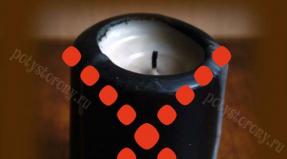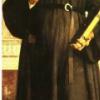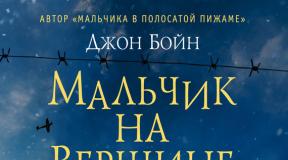Hungarian Royal Army. Hungarian ground forces. th stage of the war against the USSR
Those who like to rewrite history should familiarize themselves with the dry numbers of a brief description of the Hungarian army and its actions in the Second World War. Which, almost in full force, fought with the anti-Hitler coalition until the last day.
The main goal of Hungarian foreign policy was the return of territories lost after the First World War. In 1939, Hungary began reforming its Armed Forces (“Honvédség”). The brigades were deployed into army corps, a mechanized corps and an air force were created, prohibited by the Treaty of Trianon in 1920.
In August 1940, in accordance with the decision of the Vienna Arbitration, Romania returned Northern Transylvania to Hungary. The eastern Hungarian border passed along a strategically important line - the Carpathians. Hungary concentrated the 9th (“Carpathian”) Corps on it.
On April 11, 1941, Hungarian troops occupied a number of areas of northern Yugoslavia. Thus, Hungary returned part of its lost in 1918 - 1920. territories, but became completely dependent on German support. The Hungarian army encountered almost no resistance from Yugoslav troops (except for the April 8 Yugoslav air raid on German military bases in Hungary) and occupied the main city of the Yugoslav left bank of the Danube, Novi Sad, where mass pogroms took place against Jews.
By mid-1941, the Hungarian armed forces numbered 216 thousand people. They were led by the head of state with the help of the Supreme Military Council, the General Staff and the War Ministry.
Military parade in Budapest.
The ground forces had three field armies of three army corps each (the country was divided into nine districts according to the areas of responsibility of the army corps) and a separate mobile corps. The army corps consisted of three infantry brigades (Dandar), a cavalry squadron, a mechanized howitzer battery, an anti-aircraft artillery battalion, a reconnaissance aircraft unit, an engineer battalion, a communications battalion and logistics units.
The infantry brigade, created on the model of the Italian two-regimental division, in peacetime consisted of one infantry regiment of the first stage and one reserve infantry regiment (both three-battalion strength), two field artillery divisions (24 guns), a cavalry detachment, air defense companies and communications, 139 light and heavy machine guns. Regimental platoons and heavy weapons companies each had 38 anti-tank rifles and 40 anti-tank guns (mainly 37 mm caliber).
Standard infantry armament consisted of a modernized 8 mm Mannlicher rifle and Solothurn and Schwarzlose machine guns. In 1943, during the unification of the weapons of Germany's allies, the caliber was changed to the standard German 7.92 mm. During the course of the war, 37 mm German-made and 47 mm Belgian-made anti-tank guns gave way to heavier German guns. The artillery used Czech-made mountain and field guns of the Skoda system, howitzers of the Skoda, Beaufort and Rheinmetall systems.
The mechanized corps consisted of Italian CV 3/35 wedges, Hungarian armored vehicles of the Csaba system and light tanks of the Toldi system.
Each corps had an infantry battalion equipped with trucks (in practice, a bicycle battalion), as well as anti-aircraft and engineering battalions, and a communications battalion.
In addition, the Hungarian Armed Forces included two mountain brigades and 11 border brigades; numerous labor battalions (formed, as a rule, from representatives of national minorities); small units of the Life Guards, Royal Guards and Parliamentary Guards in the capital of the country - Budapest.
By the summer of 1941, the battalions were approximately 50% equipped with tanks.
In total, the Hungarian ground forces consisted of 27 infantry (mostly framed) brigades, as well as two motorized brigades, two border jäger brigades, two cavalry brigades, and one mountain rifle brigade.
The Hungarian Air Force consisted of five aviation regiments, one long-range reconnaissance division and one parachute battalion. The Hungarian Air Force's aircraft fleet consisted of 536 aircraft, of which 363 were combat aircraft.
1st stage of the war against the USSR
On June 26, 1941, unidentified aircraft raided the Hungarian city of Kassa (now Kosice in Slovakia). Hungary declared these planes to be Soviet. There is currently an opinion that this raid was a German provocation.
On June 27, 1941, Hungary declared war on the USSR. The so-called “Carpathian Group” was deployed to the Eastern Front:
First Mountain Infantry Brigade;
- eighth border brigade;
- mechanized corps (without a second cavalry brigade).
These forces invaded the Ukrainian Carpathian region on July 1 and, after starting battles with the Soviet 12th Army, crossed the Dniester. Hungarian troops occupied Kolomyia. Then the mechanized corps (40 thousand people) entered the territory of Right Bank Ukraine and continued military operations as part of the 17th German Army. In the Uman region, as a result of joint actions with German troops, 20 Soviet divisions were captured or destroyed.
Hungarian soldier with an anti-tank rifle. Eastern front.
In October 1941, the corps, after a rapid 950-kilometer throw, reached Donetsk, having lost 80% of its equipment. In November, the corps was recalled to Hungary, where it was disbanded.
From October 1941, the first mountain rifle and eighth border brigades in the Ukrainian Carpathian region were replaced by newly formed security forces brigades numbered 102, 105, 108, 121 and 124. These brigades each included two reserve infantry regiments armed with light weapons, an artillery battery and a squadron cavalry (6 thousand people in total).
In February 1942, the Germans moved the 108th Security Forces Brigade to the front line in the Kharkov area, where it suffered significant losses.
2nd stage of the war against the USSR
In the spring of 1942, Germany's need for more soldiers on the Soviet-German front forced the Hungarians to mobilize their second army of 200,000 men. It included:
3rd Corps: 6th Brigade (22nd, 52nd Infantry Regiments), 7th Brigade (4th, 35th Infantry Regiments), 9th Brigade (17th, 47th Infantry Regiments) shelves);
4th Corps: 10th Brigade (6th, 36th Infantry Regiments), 12th Brigade (18th, 48th Infantry Regiments), 13th Brigade (7th, 37th Infantry Regiments) shelves); 7th Corps: 19th Brigade (13th, 43rd Infantry Regiments), 20th Brigade (14th, 23rd Infantry Regiments), 23rd Brigade (21st, 51st Infantry Regiments) shelves).
In addition, subordinate to the army headquarters were: 1st armored brigade (30th tank and 1st motorized infantry regiments, 1st reconnaissance and 51st anti-tank battalions), 101st heavy artillery division, 150th motorized artillery division, 101st motorized anti-aircraft division and 151st engineer battalion.
Each brigade had an artillery regiment and support units, the number of which was identical to the brigade number. After October 1942, a reconnaissance battalion was added to each of the brigades, formed from the newly created mobile units (which combined cavalry, motorized rifle, cyclists and armored units). The armored brigade was formed in the spring of 1942 from two existing mechanized brigades and was equipped with tanks 38(t) (formerly Czechoslovak LT-38), T-III and T-IV, as well as Hungarian Toldi light tanks, Csaba armored personnel carriers ( Csaba) and self-propelled guns "Nimrod" (Nimrod).
Germany proposed rewarding Hungarian soldiers who distinguished themselves on the Eastern Front with large land plots in Russia.
Under the command of Colonel General Gustav Jani, the Second Army arrived in the Kursk region in June 1942 and advanced to forward positions along the Don south of Voronezh. She was supposed to defend this direction in case of a possible counter-offensive by Soviet troops. From August to December 1942, the Hungarian army fought long, exhausting battles with Soviet troops in the area of Uryv and Korotoyak (near Voronezh). The Hungarians failed to liquidate the Soviet bridgehead on the right bank of the Don and develop an offensive towards Serafimovichi. At the end of December 1942, the Hungarian Second Army switched to passive defense.
During this period, the territory of Hungary began to be subject to air raids. On September 5 and 10, Soviet long-range aviation carried out strikes on Budapest.
Hungarian troops in the Don steppes. Summer 1942
At the beginning of the winter of 1942, the Hungarian command repeatedly turned to the German command with a request to provide the Hungarian troops with modern anti-tank guns - the shells of outdated 20-mm and 37-mm guns did not penetrate the armor of Soviet T-34 tanks.
On January 12, 1943, Soviet troops crossed the Don River across the ice and broke through the defenses at the junction of the 7th and 12th brigades. The 1st Armored Brigade, which was subordinate to the German command, was withdrawn and did not receive the order to counterattack the enemy. The disorderly retreat of the Hungarian army was covered by units of the 3rd Corps. The losses of the 2nd Army amounted to about 30 thousand soldiers and officers killed, and the army lost almost all tanks and heavy weapons. Among the fallen was the eldest son of the Kingdom's regent, Miklos Horthy. The remaining 50 thousand soldiers and officers were taken prisoner. This was the largest defeat of the Hungarian army in the entire history of its existence.
Hungarian soldiers who died at Stalingrad. Winter 1942 - 1943
3rd stage of the war against the USSR
In March 1943, Admiral Horthy, seeking to strengthen troops within the country, recalled the Second Army back to Hungary. Most of the army's reserve regiments were transferred to the "Dead Army", which turned out to be the only association of Hungarian troops that actively fought on the Soviet-German front. Its military formations were reorganized and given new numbers, although this process was more likely aimed at the German ally than at the Russians. Now the Hungarian army included the 8th Corps stationed in Belarus (5th, 9th, 12th and 23rd brigades) and the 7th Corps remaining in Ukraine (1st, 18th, 19th I, 21st and 201st brigades).
This army first of all had to fight the partisans. In 1943, artillery and reconnaissance units were deployed into battalions. These Hungarian units were subsequently united into the 8th Corps (soon to become known in their homeland as the "Dead Army"). The corps was formed in Kyiv, and was tasked with protecting communications from Polish, Soviet and Ukrainian partisans in northeastern Ukraine and the Bryansk forests.
In mid-1943, the Hungarians decided to reorganize their infantry brigades along German lines: three infantry regiments, 3-4 artillery divisions, as well as engineering and reconnaissance battalions. The regular infantry regiments of each corps were united into “mixed divisions”, the reserve regiments into “reserve divisions”; All mechanized units were reassigned to the first corps; its basis was the recreated 1st armored division, the newly formed 2nd armored division and the 1st cavalry division, formed in 1942 from the previous cavalry brigades.
The Border Guard Group of the 27th Light Division operated as a third regiment throughout the 1944 campaign. The mountain and border battalions were not reorganized, but were reinforced in Transylvania by 27 Szekler militia battalions. A shortage of weapons seriously delayed this reorganization, but eight mixed divisions were ready by the end of 1943, and reserve divisions by the spring of 1944. Most of them were transferred to the “Dead Army”, which the German command refused to send to Hungary and which now consisted from the 2nd Reserve Corps (former 8th, 5th, 9th, 12th and 23rd Reserve Divisions) and the 7th Corps (18th and 19th Reserve Divisions).
Armored divisions were stationed at the forefront of the Soviet-German front. The tank battalions were equipped with Hungarian medium tanks Turan I and II. The combat readiness of the crews after several years of war was at a high level.
In addition, they added eight assault gun divisions. At first it was supposed to equip them with new assault guns of the Zrinyi system, but there were only enough guns for two battalions, the rest were armed with 50 German StuG III. Initially the divisions were numbered 1 to 8, but later they were assigned the numbers of the corresponding mixed divisions to which they were supposed to be attached.
4th stage of the war against the USSR
In March - April 1944, German troops entered Hungarian territory to guarantee its continued loyalty. The Hungarian army was ordered not to resist.
After this, mobilization was completely carried out for the first time. In May 1944, the 1st Army (2nd Armored, 7th, 16th, 20th, 24th and 25th Mixed and 27th Light Divisions, 1st and 2nd Mountain Infantry brigade) was sent to the Ukrainian Carpathian region. She was also given the 7th Corps of the “Dead Army”, which was already conducting combat operations in this direction.
The 1st Hungarian Tank Division attempted to counterattack the Soviet tank corps near Kolomyia - this attempt ended in the death of 38 Turan tanks and the rapid withdrawal of the Hungarian 2nd Armored Division to the state border.
By August 1944, the army was reinforced with the remaining regular divisions (6th, 10th and 13th mixed). However, the army soon had to retreat to the Hunyadi line in the north of the Carpathian section of the border, where it took up defensive positions. Meanwhile, the elite 1st Cavalry Division linked up with the 2nd Reserve Corps in the Pripyat area. The division distinguished itself during the retreat to Warsaw and was awarded the right to be called the 1st Hussar Division. Soon after this the entire corps was repatriated.
Romania's defection to the USSR in August 1944 exposed Hungary's southern borders. On September 4, the Hungarian government declared war on Romania. To obtain new formations, training units of infantry, armored, cavalry divisions and mountain brigades were combined into depot divisions or “Scythian” divisions. Despite the pompous name "division", they usually consisted of no more than a couple of battalions and batteries of artillery and soon, together with some formations from the 1st Army, were transferred to the 2nd Army (2nd Armored, 25th Combined, 27th Light, 2nd, 3rd, 6th, 7th and 9th “Scythian” divisions; 1st and 2nd Mountain Infantry Brigades, units of the Zeckler militia), which quickly moved into Eastern Transylvania. .
The newly created 3rd Army (1st armored, “Scythian” cavalry, 20th mixed, 23rd reserve, 4th, 5th and 8th “Scythian” divisions) was transferred to Western Transylvania. She had to stop the Romanian and Soviet troops who began crossing the South Carpathian passes. The 3rd Army managed to create a defensive line along the Hungarian-Romanian border. In the Arad area, the 7th Assault Artillery Division destroyed 67 Soviet T-34 tanks.
The Soviet command tried to convince the commander of the 1st Army, Colonel General Belo Miklos von Dalnoky, to oppose the Germans, but he eventually decided to retreat to the west. Finding itself in a hopeless situation, the 2nd Army also retreated.
On September 23, 1944, Soviet troops entered Hungarian territory in the Battonyi area. On October 14, 1944, a Soviet ultimatum to Hungary followed with a demand to declare a truce within 48 hours, break all relations with Germany, begin active military operations against German troops, and also begin the withdrawal of its troops from the pre-war territory of Romania, Yugoslavia and Czechoslovakia.
On October 15, 1944, M. Horthy accepted the terms of the ultimatum, but the Hungarian troops did not stop fighting. The Germans immediately arrested him and installed the leader of the ultranationalist Arrow Cross party, Ferenc Szálasi, at the head of the country, vowing to continue the war to a victorious end. The Hungarian army came more and more under the control of German generals. The corps structure of the army was destroyed, and the three active armies were reinforced by German military units.
Otto Skorzeny (1st from right) in Budapest after the completion of Operation Faustpatron. October 20, 1944
The German command agreed to the creation of several Hungarian SS infantry divisions: the 22nd SS Maria Theresa Volunteer Division, the 25th Hunyadi, the 26th Gombos and two others (which never were formed). During the Second World War, Hungary gave the largest number of volunteers to the SS troops. In March 1945, the XVII SS Army Corps was created, called “Hungarian”, since it included the majority of the Hungarian SS formations. The last battle (with American troops) of the corps took place on May 3, 1945.
Propaganda poster “Against all odds!”
In addition, the Germans decided to equip four new Hungarian divisions with modern weapons: Kossuth, Görgey, Petöfi and Klapka, from which only Kossuth was formed. The most effective new military formation turned out to be the elite parachute division “St. Laszlo” (Szent Laszlo), created on the basis of the parachute battalion.
The composition of the formed divisions was as follows:
"Kossuth": 101st, 102nd, 103rd infantry, 101st artillery regiments.
“Saint Laszlo”: 1st parachute battalion, 1st, 2nd elite infantry regiments, 1st, 2nd armored regiments, 1st, 2nd reconnaissance battalions, two river guard battalions, anti-aircraft division.
Modern German tanks and self-propelled artillery units were transferred to the Hungarian armored forces: 13 Tigers, 5 Panthers, 74 T-IVs and 75 Hetzer tank destroyers.
5th stage of the war against the USSR
On November 4, 1944, Soviet troops approached Budapest, but already on November 11, their offensive was bogged down as a result of fierce resistance from German and Hungarian troops.
At the end of December 1944, the Hungarian 1st Army retreated to Slovakia, the 2nd Army was disbanded and its units were transferred to the 3rd Army, stationed south of Lake Balaton, and the German 6th and 8th armies. occupying positions in Northern Hungary.
On December 26, Soviet troops of the 2nd and 3rd Ukrainian Fronts completed the encirclement of the Budapest group of German and Hungarian troops. Budapest was cut off, it was defended by a mixed German-Hungarian garrison, which consisted of the 1st Armored, 10th Mixed and 12th Reserve Divisions, the Bilnitzer assault artillery group (1st Armored Car, 6th, 8th , 9th and 10th Artillery Assault Battalions), anti-aircraft units and Iron Guard volunteers.
From January 2 to January 26, 1945, counterattacks by German and Hungarian troops followed, trying to relieve the encircled group in Budapest. In particular, on January 18, Hungarian troops launched an offensive between lakes Balaton and Velence and on January 22 occupied the city of Szekesfehervár.
On February 13, 1945, Budapest capitulated. Meanwhile, the bloodless 1st Army retreated to Moravia, where it occupied a defensive line that lasted until the end of the war.
On March 6, 1945, Hungarian and German troops launched an offensive in the area of Lake Balaton, but on March 15, Soviet troops stopped it.
In mid-March 1945, after the failure of the German counteroffensive in the area of Lake Balaton, the remnants of the 3rd Army turned west, and the 1st Hussar Division was destroyed near Budapest. By March 25, most of the remnants of the Hungarian 3rd Army were destroyed 50 kilometers west of Budapest. The remnants of the 2nd Armored, 27th Light, 9th and 23rd Reserve Divisions, as well as the 7th and 8th "Scythian" divisions surrendered to the Americans in Northern Austria, while the remaining units (including the " St. Laszlo") fought on the Austrian-Yugoslav border and only surrendered to British troops in May 1945.
During the battles for Budapest in the winter of 1945, Hungarian formations appeared as part of the Soviet army.
During the Second World War, Hungary lost about 300 thousand military personnel killed, and 513,766 people were captured.
It is believed that two thirds of the million Hungarian soldiers who died in the two world wars are buried outside Hungary. Most of them lie in Russian soil, in the bend of the Don.The defeat of the 200,000-strong 2nd Hungarian Army near Voronezh in the winter of 1943 became the largest military defeat in the thousand-year history of this state.
Hungary's entry into the war against the USSR
After the collapse of Austria-Hungary and the signing of the Treaty of Trianon in 1920, the Kingdom of Hungary lost 2/3 of its territory and 60% of its population. From March 1920 to October 1944, the official head of the Hungarian state (regent) was Miklós Horthy, and his foreign policy was consistently aimed at regaining the "lost lands". Two Vienna arbitrations made it possible to partially achieve this goal: Hungary received part of the Czechoslovak and Romanian lands. This was possible only thanks to the help of the Axis countries, Germany and Italy. Now Hungary became their satellite and was forced to follow in the wake of German policy. 20 November
In 1940, Hungary joined the Berlin (Tripartite) Pact.
Seeing off Hungarian soldiers to the front at the railway station in Budapest
After the German attack on the USSR and the bombing of the Hungarian city of Kosice by unidentified aircraft, Hungary declared war on the Soviet Union on June 27, 1941. Counting on a quick victory for Germany, the Hungarian leadership, in exchange for military assistance, hoped for territorial acquisitions at the expense of other countries - primarily Romania. In order not to aggravate relations with other satellites of the Third Reich, Hungary officially declared the goal of the war to be a campaign against Bolshevism.
German historian Kurt Tippelskirch, in his article “The German Offensive on the Soviet Union,” describes Hitler's attitude towards Hungary as follows:
“Hitler had little sympathy for the small Danube state. The political claims of Hungary seemed exaggerated to him, and he considered the social structure of this country to be outdated. On the other hand, he did not want to refuse military assistance to Hungary. Without devoting her to his political plans, he insisted on the expansion and motorization of the Hungarian army, which was liberated from the shackles of Trianon much more slowly than the German armed forces from the shackles of the Treaty of Versailles. Only in April did Hitler inform Hungary of his political plans. She agreed to allocate
15 divisions, of which, however, only a small part was combat-ready.”
The German command decided to use the Hungarian army as part of its Army Group South. The Hungarian formation was called the “Carpathian Group”, its core was a mobile corps, which included the 1st and 2nd cavalry, as well as the 1st and 2nd motorized brigades. The “Carpathian Group” also included the 8th Army Corps, which united the 1st Mountain and 8th Border Brigades. The total number of ground troops of the group was 44,400 people. From the air, the Hungarian formations were supposed to be covered by the 1st Aviation Field Brigade.
 Soviet medium tank T-28 captured by the Hungarians
Soviet medium tank T-28 captured by the Hungarians
According to the memoirs of General Staff Captain Ernő Shimonffy-Toth, before the start of hostilities at the Carpathian Tatar Pass, Chief of the General Staff Lieutenant General Szombathelyi “he looked at us and said with sadness on his face: “What will come of this, Lord, what will come of this? And did we have to get involved in this stupidity? This is a disaster, we are rushing towards our destruction.".
After the first battles against the Soviet troops, the infantry units of the 8th Army Corps of the “Carpathian Group” suffered heavy losses and were left in Galicia as occupation forces. On July 9, the “Carpathian Group” was disbanded, and its mobile corps was reassigned to the German 17th Army. It was used by the German command to pursue retreating Soviet troops, as well as in the Uman operation. By the fall of 1941, the mobile corps had lost almost all its armored vehicles and a significant part of its personnel, was recalled to Hungary and disbanded. Of the Hungarian units on the territory of the USSR, by the beginning of 1942, there were six security infantry divisions deployed in the rear of Army Group South and performing occupation functions.
2nd Hungarian Army
The failure of the Blitzkrieg and the heavy losses suffered by the German army on the Eastern Front in 1941 led to the fact that Hitler and the German military elite were forced to demand that their allies and satellites send new large military formations. German Foreign Minister Joachim von Ribbentrop and Field Marshal Wilhelm Keitel arrived in Budapest in January 1942 for negotiations, after which Miklos Horthy assured Hitler that Hungarian troops would take part in the Wehrmacht's spring military operations.
 Another trophy - a pedestal quad installation of Maxim machine guns
Another trophy - a pedestal quad installation of Maxim machine guns
This was to be done by the 2nd Hungarian Army, which was based on the 3rd, 4th and 7th Army Corps. In addition, the 1st Armored Brigade, as well as several artillery battalions and an air group, were subordinate to the army headquarters. The total number of these formations was 206,000 people. The new army also included the so-called “worker battalions”, which, according to various sources, contained from 24,000 to 35,000 people. They had no weapons, a significant part of them were driven into forced labor. For the most part, the “worker battalions” consisted of Jews, as well as representatives of other national minorities: Gypsies, Yugoslavs, etc. Among them were also “politically unreliable” Hungarians - mainly members of various left-wing parties and movements. Colonel General Gustav Jani became the commander of the 2nd Army.
Hungarian Prime Minister Miklos Kallai, escorting one of the units of the 2nd Army to the front, said in his speech:
“Our land must be protected where it is best to defeat the enemy. By pursuing him, you will protect the lives of your parents, your children and secure the future of your fellow humans.”
To boost the morale of newly recruited military personnel, the Hungarian government has announced a number of special benefits for them and their families. However, this caused little enthusiasm: the Honvedians already saw that hopes for a blitzkrieg and a carefree stroll through the Russian expanses had not come true and difficult, exhausting battles awaited them.
 Hungarian cavalry on the street of one of the captured Soviet cities
Hungarian cavalry on the street of one of the captured Soviet cities
Almost all the armored units remaining in Hungary were sent to the 2nd Army - they were consolidated into the 1st Armored Brigade. In the same way, they tried to equip the army with vehicles as much as possible, but it was still lacking. There was also a lack of anti-tank artillery, and although Germany promised to provide assistance, this was never done in full: the Hungarians received only a few dozen outdated 50-mm Pak 38 anti-tank guns.
The 3rd Army Corps was the first to arrive at the front in April 1942, and the formation of the remaining units of the army was delayed. On June 28, 1942, the offensive of the German Army Group Weichs began: striking at the junction of the 40th and 13th Armies of the Bryansk Front, the Germans broke through the Soviet defenses. The German command set the Hungarian units the task of crossing the Tim River and on the same day capturing the city of the same name. This direction was defended by the Soviet 160th and 212th rifle divisions, which put up stubborn resistance and left Tim only on July 2 after it was encircled. In these battles, the Hungarian 7th and 9th light infantry divisions suffered heavy losses.
 Hungarian soldiers in Stary Oskol, September 1942
Hungarian soldiers in Stary Oskol, September 1942
Subsequently, the 3rd Corps began pursuing Soviet troops, occasionally engaging in battles with their rearguards. He was then included in the 2nd Hungarian Army, the remaining units of which arrived at the front only at the end of July and were ordered to take forward positions along the western bank of the Don south of Voronezh. The Chief of the Hungarian General Staff, Colonel General Ferenc Szombathelyi, visited army units in September 1942 and left the following note about it:
“The most amazing thing was that individual formations of our troops fell into complete lethargy; they did not follow their commanders, but left them in the lurch, throwing away their weapons and their uniforms so as not to be recognized by the Russians. They were hesitant to use their heavy weapons, not wanting to provoke the Russians into returning fire. They did not rise when it was necessary to go on the attack, they did not send out patrols, and there was no artillery or aviation preparation. These messages show that the Hungarian soldier is in a severe mental crisis..."
The German command did not have much hope for the fighting qualities of the troops of its satellites, but considered it quite possible for them to maintain a passive defense behind the water barrier. But, before starting to build a defensive line, the Hungarians had to eliminate the Soviet bridgeheads on the west bank, formed as a result of the withdrawal of the bulk of the troops. Having achieved, at the cost of high losses, the elimination of one of them in the Korotoyak area, the Hungarian units were never able to completely dislodge Soviet troops from the other two, Storozhevsky and Shchuchensky, from which the offensive of the Voronezh Front subsequently began. In total, in the summer-autumn battles, according to the modern Hungarian historian Peter Szabó, the losses of the Honvedians of the 2nd Army amounted to up to 27,000 people. At the end of December 1942, the 2nd Army finally switched to defensive actions.
Ostrogozh-Rossoshan operation of the Voronezh Front
After the encirclement of the German 6th Army in Stalingrad, the Soviet command developed an offensive plan on a broad front. One of its stages was the Ostrogozh-Rossoshan offensive operation of the troops of the Voronezh Front, the purpose of which was to encircle and destroy the Ostrogozh-Rossoshan enemy group, the main force of which was the 2nd Hungarian Army. The idea of the operation was to strike in three areas, far apart from one another: the 40th Army was to attack from the Storozhevsky bridgehead towards the 3rd Tank Army, advancing from the area north of Kantemirovka, and the 18th Rifle Corps, operating from the Shchuchensky bridgehead , delivered a cutting blow.
The offensive of the 40th Army, planned for January 14, 1943, began a day earlier, which was a consequence of the success of the reconnaissance in force carried out on January 12, which revealed the weakness of the Hungarian defense. At dawn on January 13, the troops of the first echelon of the 40th Army, after powerful artillery bombardment, went on the offensive from the Storozhevsky bridgehead. By the end of the day, the main defense line of the 7th Hungarian Infantry Division had been broken through on a 10-kilometer front.
 Without coordination with the allies, nowhere. Conversation between Hungarian and German officers
Without coordination with the allies, nowhere. Conversation between Hungarian and German officers
As a result of three-day battles on January 13–15, units of the 40th Army broke through the positions of the 2nd Hungarian Army, overcoming the first and second lines of its defense. The offensive of the 18th Rifle Corps and the 3rd Tank Army also developed successfully, resulting in the encirclement and division of enemy groups into three parts over January 16–19. The final liquidation of the dissected units of the Ostrogozh-Rossoshan enemy group was carried out in the period from January 19 to 27.
This is how senior lieutenant of the 23rd Hungarian Light Infantry Division Tibor Selepcini describes the events of January 16:
“...The intense Russian artillery and mortar shelling lasted for two hours. We are on the defensive. We detain the scuttlers and return them to their positions. At 12 o’clock strong barrage fire from “Stalin’s organs” and mortars fell on us, then our defenses were broken through. There are many wounded and some killed. The Russians are storming the heights. The weapon fails, unable to withstand Russian frosts. The jammed machine guns fell silent, as did the mortars. There is no artillery support. He led the ski company into a counterattack, we stormed the heights and consolidated our position. But the Russians are pressing, and more and more soldiers are rushing back. At 12:30 the Russians crush us. Again losses. Only 10–15 minutes had height. The Russians go to the rear of the neighboring company. Manages to carry out the wounded. But it was not possible to carry out 10–15 dead. At 13 o'clock the Russians are pushing again... Our desperate assault is fruitless... There is no artillery fire support. Even my machine gun bursts into the crowd are not able to stop the flight..."
In just a few days, the 2nd Hungarian Army was completely defeated. Colonel General Gustav Jani, who commanded it, ordered "stand until the last man", but at the same time appealed to the German command with requests to allow withdrawal, pointing out that “commanders and soldiers hold out to the end, but without immediate and effective help, the divisions will be scattered and crushed one after another”.
 Soldiers of the 2nd Hungarian Army and snowy Russian expanses
Soldiers of the 2nd Hungarian Army and snowy Russian expanses
In reality, the retreat was already in full swing, rapidly turning into a flight of disorganized and demoralized people. The order to retreat was received from the Germans only on January 17, but by that time the front had collapsed. Hungarian Colonel General Lajos Veres Dalnoki wrote about these days:
“The horror we saw was even worse than Napoleonic retreat. Frozen corpses lay on the streets of the villages, sleighs and shot cars blocked the road. Among the shot German anti-tank guns, cars and trucks lay the corpses of horses; abandoned ammunition and the remains of human bodies indicated the path of retreat. The soldiers, deprived of clothes and shoes, looked reproachfully at the sky, and, in addition, hundreds of crows were circling in the whistling cold wind, awaiting a feast. This is the horror of the living. This is how the hungry and tired army pulled itself towards life. The food consisted mainly of pieces of meat cut from the legs of horse corpses, frozen cabbage, soup made from carrots, and they drank melted snow. If they ate it near a burning house, they felt happy.”
Colonel Hunyadvari reported in his report that the Soviet partisans, having captured and disarmed the retreating Hungarian soldiers, talked with them and released them, shaking hands in a friendly manner and saying: “We won’t touch you, go home to Hungary”. He further noted that, according to Moscow radio reports, as well as according to witnesses, the partisans supplied lard and bread to the exhausted and hungry Hungarians they detained. The report contrasted such humanism of the Soviet people "ruthless, brutal, violent behavior of German soldiers", What “played no small role in the difficulties of retreat”.
 Before the front collapsed, the Hungarians had the opportunity to bury their soldiers with full honors. The photo was taken in the village of Alekseevka, Belgorod region. The inscription on the nearby crosses says that under them lie the unknown Hungarian Honveds who died on August 7, 1942
Before the front collapsed, the Hungarians had the opportunity to bury their soldiers with full honors. The photo was taken in the village of Alekseevka, Belgorod region. The inscription on the nearby crosses says that under them lie the unknown Hungarian Honveds who died on August 7, 1942
Indeed, during the retreat, the Germans pushed the Hungarians away from good roads, kicked them out of their houses where they went to warm up, took away their means of transportation, horses, warm clothes, and did not give them the opportunity to use German vehicles. Ruthlessly persecuted by their allies, the Hungarian soldiers, in the severe frosts that reigned in those days, were forced to move on foot, unable to find a roof over their heads. The mortality rate among the retreating Honvedians grew rapidly. Writer Ilya Ehrenburg wrote in his notes dated February 21, 1943:
“The units defeated at Voronezh and Kastorny frightened the Kursk garrison. The Germans shot Hungarians in front of the residents. Hungarian cavalrymen exchanged horses for a pound of bread. I saw the commandant’s order on the walls of Kursk: “Residents of the city are prohibited from letting Hungarian soldiers into their houses.”
The aforementioned Hungarian military historian Peter Szabó in his book “Bend of the Don: The History of the 2nd Hungarian Royal Army” notes:
“During the period of defensive battles in January and February 1943, the 2nd Hungarian Army received only a negative assessment from both the German and the Hungarian high command. They criticized the disorderly retreat of troops and the lack of serious resistance. Many early German war reports said: “Hungarian rabble.” This expression suggests that the retreating defeated Hungarian troops were perceived as a burden for the German defense.”
Data on the losses of the 2nd Hungarian Army in various sources are very different:
between 90,000 and 150,000 dead, wounded and missing. Estimates of the number of people captured range from 26,000 to 38,000. Peter Szabo estimates that the number of Hungarians killed, wounded and captured during the almost year-long stay of the 2nd Hungarian Army at the front is approximately 128,000 people, of whom about 50,000 died, the same number were wounded, and the rest were captured. captivity. According to Sabo, the losses of the 2nd Army's equipment amounted to 70%, while heavy weapons were completely lost.
 After the retreat took on the character of “save yourself who can,” the dead Honvéds more often remained on the sidelines
After the retreat took on the character of “save yourself who can,” the dead Honvéds more often remained on the sidelines
Particularly high losses were suffered by the labor battalions, whose personnel were already constantly subjected to discrimination by the Magyar soldiers - from physical punishment to execution. During the retreat, the Trudoviks found themselves in the worst conditions. Some of them were captured by the Soviets, causing surprise that the majority were Jews.
The scattered remnants of the 2nd Hungarian Army, having escaped death and captivity, reached the location of German units. There, Hungarians were interned and sent home during March-April, with the exception of those units that were reorganized and left in Ukraine as occupation troops. This marked the end of the battle path of the 2nd Hungarian Army on the Eastern Front.
Consequences of the defeat
The destruction of the 2nd Army shocked the whole country. The Hungarian army had never known such a defeat: in two weeks of fighting, the state actually lost half of its armed forces. Almost every Hungarian family mourned someone. News from the front leaked to the press. Colonel Sandor Nadzhilacki, speaking to editors of print publishing houses at a closed meeting, said literally the following:
“In the end, you all must understand that victory is achieved only at the cost of sacrifice and loss. Death awaits us all, and no one can argue with the fact that dying heroically on the battlefield is much more honorable than from atherosclerosis.”
The Hungarian press obediently tried to inflate patriotic sentiments, but this turned out to be little consolation for those who had a father or son, brother or nephew, husband or fiancé left in the vast Russian expanses. Ordinary Hungarians could either wait impatiently for news or mourn their loss.
 A peasant from the village of Koltunovka, Belgorod region, stands near a cross erected by the Hungarians. The inscription in two languages reads: “Russian!!! The Hungarian army was here, which returned your cross, freedom and land!” There were only a few kilometers left to Ostrogozhsk and Rossoshi.
A peasant from the village of Koltunovka, Belgorod region, stands near a cross erected by the Hungarians. The inscription in two languages reads: “Russian!!! The Hungarian army was here, which returned your cross, freedom and land!” There were only a few kilometers left to Ostrogozhsk and Rossoshi.
http://www.fortepan.hu
After such a defeat, the Hungarian leadership no longer had any desire to send new troops to the Eastern Front. Of all the Magyar units on Soviet territory, only the occupation Hungarian divisions remained - in Ukraine (7th Corps) and in Belarus (8th Corps). They carried out military operations against partisans, and also carried out punitive actions against civilians - until Soviet troops completely liberated the occupied territory.
Three quarters of a century later
In Hungary, after the collapse of the socialist camp, the unspoken veil of silence around the 2nd Army gradually fell away. Modern Hungarian historiography pays a lot of attention to an event that was tragic for many compatriots. Many articles and books dedicated to the lost army appeared. A common occurrence for them is an attempt to justify the actions of the ruling circles of Hungary before and during the Second World War, including the sending of Hungarian units to the Eastern Front.
Hungary's declaration of war on the USSR is presented as a necessity, the result of a forced choice in favor of the actions to which Hungary was pushed by Nazi Germany, with the risk of falling out of favor with Hitler if it refused. The suffering of the retreating Honvedians - hungry, exhausted and frostbitten - is described in a heroic spirit. At the same time, the topic of war crimes committed by them on Soviet soil is usually hushed up by most Hungarian historians.
 The memorial cemetery of Hungarian soldiers in the village of Rudkino, Voronezh region, is equipped on a large scale
The memorial cemetery of Hungarian soldiers in the village of Rudkino, Voronezh region, is equipped on a large scale
As an example, we can recall the anniversary conference held in Hungary in 2013, dedicated to the defeat of the 2nd Army on the Don. Professor Sandor Sokal, who spoke at this conference, stated that, contrary to popular belief, the 2nd Hungarian Army 70 years ago was not at all defeated and destroyed in the bend of the Don. He also said that “everything that could be done was done for the 2nd Army”. The Director General of the Research Center of the Hungarian Academy of Sciences, Pal Fodor, speaking, said:
“Sending the 2nd Hungarian Army to the Don Bend was not an irresponsible act. Today we know that the soldiers at the front received everything that the country could give them... The time has come for a realistic assessment of the military events in the bend of the Don: the conditions of the Treaty of Trianon could only be corrected with the help of Germany and Italy, so the Hungarian political leadership could not afford not to participate in the fight against the Soviet Union on the side of the Germans."
An expert from the Hungarian Ministry of Defense, Peter Illusfalvi, made a similar judgment, saying that “There is currently a lot of false information circulating around these events. It is important to see that in the current historical and political situation, the appearance of the 2nd Army on the Soviet front was inevitable.”.
 Hungarians in Soviet captivity
Hungarians in Soviet captivity
Further more. Already on January 11, 2014, the Secretary of the Hungarian Ministry of Defense Tamas Varga, speaking in Budapest at an event dedicated to the 71st anniversary of the Don disaster of the 2nd Army, said: “Wearing unsuitable clothing, often with faulty weapons, and lacking ammunition and food, many tens of thousands of Hungarians became victims.”. He emphasized that Hungarian soldiers on distant Russian fields fought and met a heroic death for their country. The next day he repeated what he had said, speaking in Pakozda in the Donskoy Memorial chapel: “Finally, it can be said that the soldiers of the 2nd Hungarian Army did not only fight for the interests of others; they gave their lives for their country".
Every year in January, many different mourning and memorial events take place in Hungary in honor of the fallen Honvedians. The country regularly hosts exhibitions that display weapons, uniforms, equipment, various items from the everyday life of Hungarian soldiers, as well as documents and photographs. Many memorials dedicated to the “heroes of the Don” have been erected on the territory of Hungary. There are such memorials on Russian soil.
 In the cemetery in Rudkino there was also a place for the memory of Jewish soldiers of the labor battalions of the 2nd Hungarian Army
In the cemetery in Rudkino there was also a place for the memory of Jewish soldiers of the labor battalions of the 2nd Hungarian Army
Thus, on the territory of the Voronezh region in the villages of Boldyrevka and Rudkino there are two large cemeteries where the remains of almost 30,000 Honveds are collected. The maintenance of these cemeteries is carried out by the Russian Union for International War Memorial Cooperation on behalf of the Hungarian Army and the Hungarian Museum of Military History. The agreement is mutual, so the Hungarian side also takes care of similar facilities on its territory.
The cemetery in Rudkino is the largest burial site of Hungarian soldiers outside of Hungary. This is a whole memorial, and a very pompous one at that: three huge crosses on a hill, illuminated by powerful spotlights, are visible for many kilometers.
A gas pipeline has been laid to the memorial, and in memory of the fallen Honvedians, an eternal flame burns there all year round. Monuments to fallen Soviet soldiers in this area are often not in perfect condition - alas, these are today's realities.
Literature:
- Abbasov A.M. Voronezh Front: chronicle of events. - Voronezh, 2010.
- Grishina A. S. Ostrogozh-Rossoshan offensive operation: the 40th Army of the Voronezh Front against the 2nd Hungarian Royal Army. History lessons - Scientific bulletins of Belgorod State University, No. 7(62), 2009.
- Filonenko N.V. History of the military operations of Soviet troops against the armed forces of Horthy Hungary on the territory of the USSR. Dissertation for the degree of Doctor of Historical Sciences. Voronezh, 2017.
- Filonenko S.I. History of the Great Patriotic War. Operation on the Upper Don. “Voronezh Week”, No. 2, 01/10/2008.
- http://istvan-kovacs.livejournal.com
- http://don-kanyar.lap.hu.
- http://www.honvedelem.hu.
- http://donkanyar.gportal.hu.
- http://mnl.gov.hu.
- http://tortenelemportal.hu.
- http://www.bocskaidandar.hu.
- https://www.heol.hu.
- http://www.origo.hu.
- http://www.runivers.ru.
3. Royal Hungarian Army (Honved)
Infantry Division
3 infantry regiments and a regimental group with a total strength of 17 thousand people (statewide). Additional armament included 300 submachine guns, 108 light and 36 heavy machine guns, 18 50 mm mortars, 18 20 mm anti-tank rifles, 20 82 mm mortars, 20 43 mm anti-tank guns, 9 75 mm anti-tank guns. It also includes an artillery regiment of 2 batteries of 105 mm guns and 1 battery of 155 mm howitzers. Logistics and supply services are up to 75 percent non-mechanized.
Reserve division
It had weaker equipment than normal field troops, but similar composition and numbers. Reserve divisions were initially used as “light” divisions in Ukraine for garrison service (as well as carrying out punitive actions against partisans and civilians. – Ed.) and only later participated in hostilities. In the summer of 1944 they had 3 infantry regiments with weak artillery.
Field Auxiliary Division
In reality, it was the equivalent of an infantry brigade in terms of combat capabilities (about 5,500 people). Its personnel were transferred from the 3rd Reserve Division and supplemented with older military personnel. The artillery was not only weak, but also mostly outdated (most of the guns had taken part in the First World War!).
Tank division
1 tank regiment, 1 motorized rifle regiment of two battalions, 1 separate tank battalion, 1 anti-tank division, 1 motorized artillery regiment, 1 engineer battalion and 1 reconnaissance company. Equipped with T-III and T-V tanks (German production) and Turan type tanks with 40 mm and 75 mm guns.
Cavalry Division (Hussars)
Represented the elite of the armed forces. It consisted of 3 cavalry regiments, 1 motorcycle battalion, 1 tank battalion, 2 artillery divisions, 1 anti-aircraft artillery division, 1 sapper company and reconnaissance company.
From the book We Fought the Tigers [anthology] author Mikhin Petr AlekseevichChapter Nineteen LIBERATION OF HUNGARY December 1944 - March 1945
From the book Equipment and Weapons 2003 02 author Magazine "Equipment and Weapons"Machine guns of Austria-Hungary Machine gun M/09 "Skoda" with belt feed, optical sight, on a tripod machine with a shield and shoulder
From the book Encyclopedia of Misconceptions. War author Temirov Yuri TeshabayevichWhat are the real reasons and fate of the “counter-revolutionary uprising” of 1956 in Hungary? “The counter-revolutionary rebellion in Hungary is an armed uprising against the people’s democratic system, prepared by the forces of internal reaction with the support of international
From the book Japanese Oligarchy in the Russo-Japanese War by Okamoto Shumpei From the book Lost Battles author Frisner HansChapter Five CREATION OF A NEW FRONT IN HUNGARY Rearguard battles between the Prut and the Carpathians. - Along mountain roads through the Carpathians. - Parts are re-formed on the fly. - New front. While the armies of the 3rd Ukrainian Front were still engaged in heavy fighting east of the Prut with
From the book Pilots at War author Chechelnitsky Grigory AbramovichChapter two. The Army is Replenishing, the Army is Learning In the spring and early summer of 1943, among air army officers, they heard more and more often: “Our regiment has arrived.” And perhaps then the most difficult question for the command was where to place new flying units: airfields
From the book Bloody Danube. Fighting in South-Eastern Europe. 1944-1945 by Gostoni PeterThe position of the Red Army in Hungary at the beginning of the German offensive 2nd Ukrainian Front consisting of the 40th and 53rd Armies, 7th Guards Army, 46th Army and 5th Air Army, as well as the Romanian 1st and 4th th armies, which were operationally subordinate to the front, in mid-February 1945
From the book USSR and Russia at the Slaughterhouse. Human losses in the wars of the 20th century author Sokolov Boris Vadimovich5. Royal Bulgarian Army In the summer of 1944, Bulgaria had more than 21 infantry divisions, 2 cavalry divisions and 2 border brigades. Most of the weapons and equipment were leased from the Germans. At least 10 divisions had modern
From the book Russia in the First World War. The Great Forgotten War author Svechin A.A.Losses of Austria-Hungary According to official data from the Austrian War Ministry, the losses of Austria-Hungary in the First World War amounted to 1,016,200 dead and deceased military personnel. According to the authors of the American "Encyclopedia of the First World War", the losses of Austria-Hungary
From the book “Cauldrons” of 1945 author Runov Valentin AlexandrovichLosses of Hungary The losses of the Hungarian army in World War II amounted to 110-120 thousand killed and died from wounds. We will accept the upper estimate of 120 thousand dead. According to data from the German command, the losses of the Hungarian ground forces and aviation on the Eastern Front during the period
From the book Afghan: Russians at War author Braithwaite RodrikSoviet intervention in Hungary, 1956 Soviet military intervention in Hungary was undertaken on November 4, 1956 to suppress the anti-communist revolution that had broken out in the country. By November 15, rebel resistance was largely crushed. Earlier, in October,
From the book of Zhukov. The ups, downs and unknown pages of the life of the great marshal author Gromov AlexFrench Army In France, there are five branches of the military: infantry, artillery, cavalry, engineers and air force. Of these, the main branch of the military, as elsewhere, is recognized as the infantry. The French formulate their view of the importance of infantry as follows: “Victory is mastery
From the book War through the eyes of a front-line soldier. Events and evaluation author Liberman Ilya AlexandrovichChapter 3 Defeat in Hungary
From the author's book40th Army Now preparations went faster. On December 14, the Operational Group of the USSR Ministry of Defense was created under the leadership of Marshal Sergei Sokolov, the first deputy minister, a man already over seventy, tall, with a deep bass and calm,
From the author's bookMinister of Defense. Suppression of protests in Hungary On February 7, 1955, Zhukov became the Minister of Defense of the USSR. A year and a half later, he remembered Stalin’s words: “Marshal Zhukov will not be left without work.” Another question is that the new campaign, unlike the Great Patriotic War,
From the author's book9.9. The Budapest offensive operation carried out on October 30, 1944 - February 13, 1945 on the territory of Hungary and Romania Budapest, the capital of Hungary, is located on the banks of the Danube and consists of two parts: the right bank hilly Buda and the left bank flat Pest. River in
Budapest has one of the smallest armies in the region - 23 thousand troops. In 1989, the number of Hungarian armed forces was 130 thousand. In addition to the general reduction of the army in the 1990s, since 2004 the country has abolished universal conscription. /kormany.hu
Hungary has not shown itself to be an active military ally of the West and a member of NATO. A limited Hungarian contingent took part in the Bosnian War, the Kosovo operation, and the Afghan and Iraqi campaigns. /kormany.hu
Hungary has achieved the most tangible results in reforming the Air Force. The basis of this country's combat aviation is 12 Swedish Saab JAS 39C fighters. According to Global Firepower, the Hungarian Air Force operates 11 fighters and 11 bombers. /kormany.hu
But the Hungarian air defense system is very weak. The army is armed with the Soviet 2K12E Kvadrat short-range anti-aircraft system and the French Mistral man-portable systems. / Wikimedia
All helicopters of the Hungarian Armed Forces are Soviet-made. In total, Budapest has 18 helicopters: the multi-purpose Mi-8 and Mi-17, as well as the transport and combat Mi-24. / Wikimedia
Global Firepower indicates that the Hungarian military has 18 transport aircraft, but does not specify their type or make. And from media reports it follows that Budapest has several units of An-26 military transport turboprops. /Reuters
The Hungarian ground forces include two infantry brigades. The headquarters of the 5th Infantry Brigade "István Bocskai" is located in Debrecen, the headquarters of the 25th Brigade "György Klapka" is in Tata. The troops are armed with Soviet, Czechoslovak and Hungarian equipment. / Wikimedia
Experts note that there is no obvious military threat to Budapest, but the country needs a combat-ready army due to difficult relations with its neighbors: Serbia, Romania, Ukraine and Slovakia, where the Hungarian minority lives. /kormany.hu
The tasks of the Hungarian army are limited to ensuring the territorial integrity of the country and preserving its national sovereignty, as well as repelling possible aggression. /Reuters
On December 28, 2010, Budapest withdrew from service the fourth generation MiG-29 light fighters, which were delivered in 1993. More than 25 aircraft then became part of the 59th Tactical Fighter Wing. / Wikimedia
Today, Hungary actually has one fighter squadron (12 aircraft). According to experts, in peacetime conditions Budapest does not need to increase its air wing. The main focus should be on modernizing other types of aircraft. / Wikimedia
The current state of the Hungarian Armed Forces does not provide the minimum necessary defense capability, although the country’s military budget is more than $1 billion. Russian analysts believe that at one time Hungary was a very problematic member of the Warsaw Warfare Force, and today it is an equally problematic member of NATO. /kormany.hu
Within the ATS, Hungary was the weakest country. Nevertheless, the number of weapons of the Hungarian Armed Forces of the socialist period is impressive: almost 1.4 thousand tanks, 1.720 thousand armored vehicles, more than a thousand artillery pieces, over 100 combat aircraft. /Reuters
Now the Hungarian army has 32 T-72 tanks, 1.1 thousand armored vehicles, 300 artillery pieces and not a single self-propelled gun, 22 combat aircraft. /Reuters
The most combat-ready part of the Hungarian army are the military intelligence units. Hungary has at least two battalions that are capable of conducting special operations. Personnel training is carried out according to American standards. /kormany.hu
In general, Hungary's military reform did not achieve its results. Budapest spends less than 2% of GDP on the army. The Hungarian Ministry of Defense reduced the army and weapons several times, but was unable to ensure the transition to models of modern Western equipment. /
The Hungarian Army is subordinate to the Ministry of Defense. However , like the army of any other country. In 2016 The strength of the Hungarian army was 31,080 military personnel in active military service, while the operational reserve brings the total number of troops to fifty thousand. In 2018, Hungary's military spending amounted to 1.21 billion $, which is about 0.94% of the country's GDP, well below the NATO target of 2%. In 2012, the government passed a resolution committing Hungary to increase defense spending to 1.4% of GDP by 2022.
Military service, modernization and cybersecurity
Military service is voluntary, although conscription may occur in wartime. In a significant modernization move, Hungary decided in 2001 to buy 14 fighter jets from the Americans at a cost of about 800 million euros. The Hungarian National Cyber Security Center reorganized in 2016 to become more effective through cybersecurity.
Service outside the country
In 2016, the Hungarian armed forces had approximately 700 troops stationed abroad as part of international peacekeeping forces, including 100 troops serving with NATO-led peacekeepers in Afghanistan, 210 Hungarian soldiers in Kosovo and 160 troops in Bosnia and Herzegovina . Hungary sent 300 logistics units to Iraq to assist US troops with armed transport convoys, although ordinary citizens were against joining the war. During the operation, one Magyar soldier was killed by an Iraqi roadside bomb.

Short story
In the 18th and 19th centuries, the hussars brought international fame to this country and served as a model of light cavalry in all European states. In 1848-1849, the Hungarian army achieved incredible success against the well-trained and equipped Austrian forces, despite the latter's obvious superiority in numbers. Józef Böhm's Winter Campaign of 1848-1849 and Arthur Gerge's Spring Campaign are still taught to this day in prestigious military schools around the world, even at West Point Academy in the United States and Russian military academies.
In 1872, the Louis Military Academy officially began training cadets. By 1873, the Hungarian army already had more than 2,800 officers and 158,000 employees. During the Great (First World) War, out of the eight million people mobilized by the Austro-Hungarian Empire, more than a million died. In the 1930s and early 1940s, Hungary was preoccupied with recapturing the vast territories and vast numbers of population lost following the signing of the Treaty of Trianon at Versailles in 1920. Conscription was introduced on a national basis in 1939. The size of the Royal Hungarian Army grew to 80,000 men, organized into seven corps. During the Great Patriotic War, the Hungarian army took part in the Battle of Stalingrad on the side of the Germans and was almost completely destroyed. During the era of socialism and the Warsaw Pact (1947-1989), it was completely restored and reorganized, and thanks to the support of the USSR, it received full-fledged tank and missile forces.
According to the 2016 Global Peace Index, Hungary is one of the most peaceful countries, ranking 19th out of 163.

Hungarian Red Army
During the era of the Socialist Bloc and the Warsaw Pact (1947-1989), the army of this country was considered quite powerful. The period from 1949 to 1955 also saw a huge effort to build and arm the Hungarian army. By 1956, the huge costs of maintaining the military-industrial complex had practically ruined the country's economy.

Revolution
In the fall of 1956, armed uprisings against the government were suppressed, and the Soviets dismantled the entire Hungarian Air Force because a significant part of the army was fighting on the same side as the revolutionaries. Three years later, in 1959, the Soviets began helping rebuild the Hungarian People's Army and supply them with new weapons and equipment, as well as rebuilding the Hungarian Air Force.

After the revolution
Satisfied that Hungary was stable and loyal to the Warsaw Pact, the USSR withdrew its troops from the country. The new Hungarian leader asked Khrushchev to leave all 200,000 Soviet soldiers in the country as he had allowed the Hungarian People's Republic to neglect its own projected armed forces, which quickly led to the deterioration of the army. Large sums of money were saved in this way and were spent on quality social programs for the population, so Hungary was able to become the "happiest barracks" in the Soviet bloc. Since the mid-1970s, limited modernization has taken place to replace old military equipment stocks with new ones and allow the army to meet its Warsaw Pact obligations.
After the collapse of the Warsaw bloc
In 1997, Hungary spent about 123 billion forints (US$560 million) on defense. Since the late 90s, Hungary has been a full member of NATO, a military organization that unites most of the countries of Europe and America. Hungary provided air bases and support to the Alliance during its war against Serbia, and contributed several military units to serve in Kosovo as part of the NATO-led operation. Thus, Hungary repeated its actions at the beginning of World War II, when it, together with Italian-German troops, invaded the territory of what was then Yugoslavia. Just as Hungary's Black Army led by Matthias Corvinus struck fear into Slavic and Romanian rebels in the Middle Ages, modern Magyar troops participate in all NATO-led military campaigns, continuing to maintain their long-established image as the most ferocious soldiers in Eastern Europe.
Read also...
- “Dream Interpretation of walking on Water dreamed of why you dream of walking on Water in a dream
- Dream Interpretation: roses, why roses are dreamed of, roses in a dream - complete interpretation of dreams
- Why do you dream of finding it in a dream book?
- Dream Interpretation: Why do you dream about a guitar?


















